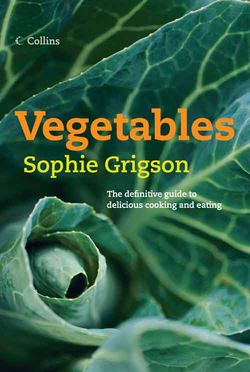Читать книгу Vegetables - Sophie Grigson, Sophie Grigson - Страница 17
COOKING
ОглавлениеPeeling or scraping or just a quick scrub? All three have their supporters, but personally I go for the peeling unless my carrots are pristine organic roots of impeccable freshness. Scraping is a messy business, I find, and slower than peeling. I know that peeling is wasteful, but you could save the peelings for the stockpot, or the compost, or even get yourself a backyard pig to feed them to. There is no doubt that commercially grown carrots must be either peeled or scraped in order to eliminate pesticide residues. When it comes to organic carrots, by definition free from pesticides, you might well consider that a good wash is sufficient.
Raw carrots are under-used. I love them in salads, coarsely grated and dressed perhaps with a mustardy vinaigrette, studded with raisins or currants and toasted pine nuts or walnuts. Or to give a more exotic air, try tossing them with lemon juice, rosewater, a little sugar, salt and a touch of sunflower oil, Moroccan-style. Grated carrots make a handsome addition to a sandwich, too, especially with cheese or hummus.
There are times when ‘over’-cooked carrots are wonderful – in a stew, say, where they’ve donated some of their sweet flavour to the other ingredients in exchange for some of theirs. However, carrots that have been left to boil in plain water for too long have received nothing in compensation but water, ergo they taste of very little. Simmered or boiled or steamed carrots do not take long to cook – the thickness of the pieces dictates exactly how long, but think in terms of 4–6 minutes. That should be long enough for the heat to have developed the flavour, but not so long that it all leaches out. If you know that the carrots you are about to cook are not very sweet, try adding a teaspoonful or two of sugar to the cooking water.
Boiled perfectly, a good carrot retaining just the right degree of firmness is a pleasure to eat plain, but even nicer with a gloss of melted butter, or fragrant lemon olive oil. In the summer I add a speckling of chopped lemon balm or mint; in the winter thyme or savory enhances the flavour.
Although boiling or steaming will always remain the principal way we cook carrots, once in a while have a go at frying (see the salad recipe overleaf) or stir-frying them, cut into slender batons. Roasted carrots should become part of your regular repertoire, if they aren’t already. They taste divine, and are sooo very easy. Just peel the carrots and halve or quarter lengthways if they are huge, then toss them into a roasting tin with a little extra virgin olive oil, a handful of garlic cloves (no need to peel), a few chunky sprigs of thyme or rosemary and a scattering of coarse salt. Roast in a hot oven (200–220°C/400–425°F/Gas 6–7) for around 40–45 minutes, stirring once or twice, until patched with brown and extremely tender.
